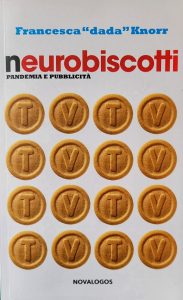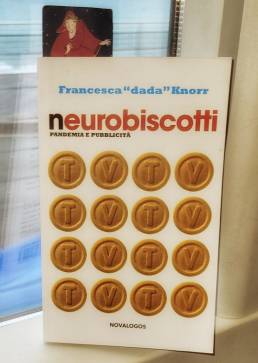The other morning in a store, near the cashier’s counter, I see a stroller with a sweet little girl of about a year and a half, sitting and holding a mobile phone. She is watching – eyes chained to the screen – a cartoon. Two caring and smiling salesgirls desperately try to get her attention by sending her kisses, greeting her and calling her, but she is absorbed by the video.

The parent (whether it was a man or a woman, or parent 1 or 2 makes no difference), unable, incompetent and insufficient, laughed at the fact that the child was unmovable when she watched that program, and did not even think of taking her cell-phone away to let her meet the Other. Parents who do not want any trouble. They ignore the neurological damage they inflict on their kids, leaving them at the mercy of a screen to undergo images in rapid succession and depriving them of basic experiences such as interacting with shopkeepers, looking around them, engaging with someone.

I go back home embittered, aware of a modern society with children and teenagers increasingly raised by videos and mobile phones, but I find in the mail the book I had ordered the day before on Amazon (the virtual became real): Neurobiscotti – Pandemia e Pubblicità (Neurocookies – Pandemic and Advertising), in which Bruno Ballardini, in the preface, reminds us that we are moving towards a life of the immaterial and of the absence, all in function of the virtual.
“The absence of the object, of the other, accustoms us to a continuous crisis of presence, to many hundreds of deaths a day that we try to process by materializing what is virtual. After all, advertising has always been based on this mechanism and has helped to reproduce it. But there have also been consequences for this constant bombardment, with fragmentation bombs, which we have suffered twenty-four hours a day from the entire post-war period to today. Walter Benjamin, who did not get to know television, applied his observations to the fragmentary nature of early cinema, observations that can still be used today with the new media… Benjamin came to the conclusion that the interruption involves a continuous “shock effect” on our associative flow: “I am not able to think what I want to think. The moving images settle in place of my thinking.” This produces precisely the “distracted perception” but nevertheless does not prevent us from performing certain tasks through habit. These intuitions were confirmed, as early as 1970, by a surprising experimental-psychology research by Osterhouse and Brock who demonstrated how distraction enormously increases the persuasive power of the message because it prevents the viewers from producing counter-arguments, making them extremely vulnerable.

And the author, Francesca “dada” Knorr, as in a concentrated extract of Dadaist performance, deconstructs the aesthetics of social networks, of the latest commercials and of being smart, in favor of a more lucid and certainly revolutionary vision of life.
“In the “liquid and digital society” every type of communication consists of ‘spots’. A spot announcement just recently reminded us that attention is made up of short moments, with a goal based on the “first impression” defined in the first seven seconds.”
Presence no longer counts, only the commercial result conveyed through the mental, in spite of Zen which, through an authentic body-mind practice, awakens us to total presence, while through clumsy marketing it is used to sell sofas, bank shares or soaps, with the promise of finding peace.
Anyone who let themselves be caught in the Net will get entangled.
Will we be able to give up the cookies that the splendid world of advertising and the internet are offering us?
A quick but intense reading: Neurobiscotti – Pandemia e Pubblicità, 82 pages, Novalogos editions.
Enjoy the reading!

Image of little girl with cookies courtesy of Ksenia Chernaya on pexel
Image of child reading courtesy of Kampus Production on pexel
Image of heart cookies courtesy of Jill Wellington on pexel
